1. Die fisiese beginsel van elektriese motorwerk
1.1 Maxwell se stelsel van vergelykings
Die elektriese motor is 'n omskakelaar wat voortdurend elektromagnetiese energie en meganiese energie omskakel.
As elektriese energie ingevoer word, kan die elektriese motor voortdurend wringkrag en meganiese energie uit lewer.
d.w.s. die elektriese motor; Omgekeerd, as 'n eksterne krag voortdurend die elektriese motoras en die meganiese energie insette druk, kan die elektriese motor voortdurend spanning en elektriese energie vanaf die draadkant omgekeer, d.w.s. die kragopwekker.
Histories is die statiese transformator ook as 'n elektriese motor gereken, maar dit het geleidelik ontwikkel om uitsluitlik na elektriese motors en kragopwekkers te verwys.
Een van die voordele van elektriese motors is dat hul verliese relatief klein is, dus bereik hulle hoë doeltreffendheid.
Large electric motors can achieve efficiencies of up to 99%.
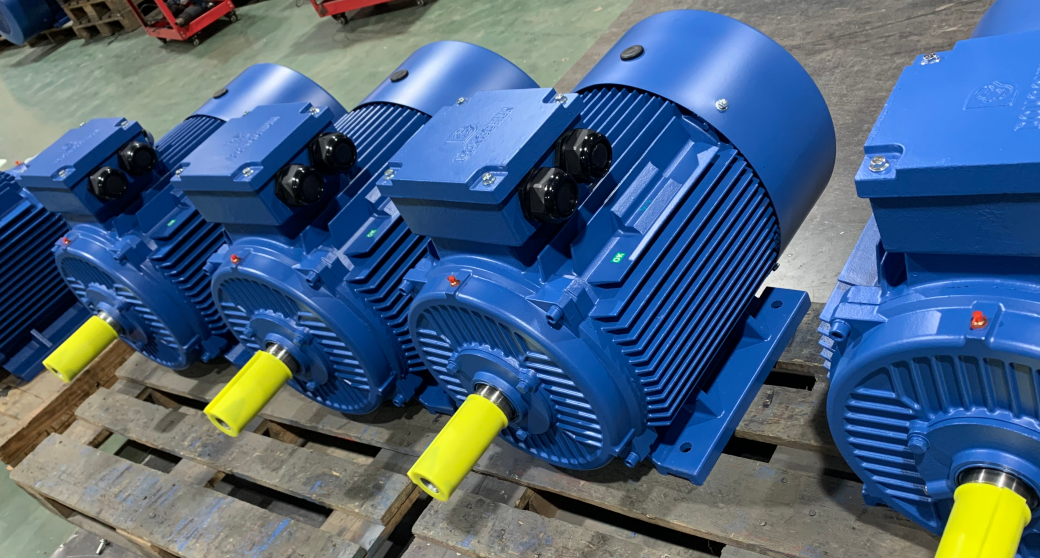
As u oor elektromagnetiese stelsels praat, is Maxwell se stelsel van vergelykings onvermydelik.
In die makroskopiese wêreld en selfs in die mikroskopiese wêreld,
Maxwell se stelsel van vergelykings kan baie effektief gebruik word om die stelsel -eienskappe te beskryf.
Maxwell se stelsel van vergelykings is saamgevat uit vorige studies oor elektromagnetiese verskynsels.
Daar is vier baie basiese vergelykings, beide in differensiële en integrale vorm.
Kom ons kyk nou na Maxwell se stelsel van vergelykings in integrale vorm.
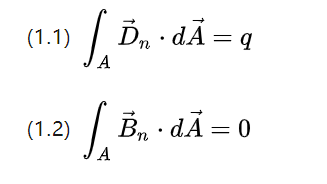
The above two equations describe the flux of the field density, respectively, the total of the outflow potential shift picture and the total of the rotating magnetic field induction picture in a closed space surface
According to the knowledge learned in high school, the electric field can be generated by point charge excitation, the magnetic field can not be excited by the magnetic monopole, but to extend the path closed, so the electric field is active, the magnetic field is passive.
So the total potential shift flux is the total charge q and the total magnetic flux is 0.
The above two equations describe the spin quantities of the field intensity, the integrals of the total electric field intensity and the total magnetic field intensity.
Corresponding to the rate of change of the magnetic flux and the rate of change of the potential shift (current intensity), respectively, for one turn along the path of the curve on a closed space curve.
The Gauss and Stokes formulas also allow the rewriting of the above four equations into differential form as follows.
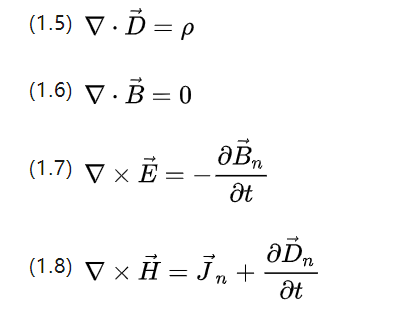
▽ for the Nabla operator, with vector dot product to calculate the scatter and fork product to calculate the spin, P for the charge body density, and Jn for the current density.
The above equations can describe basically all the electromagnetic behavior that occurs in all ac induction motor systems
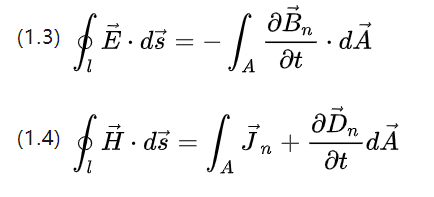
1.2 Material polarization and magnetization for electrical energy
In an applied electric rotating magnetic field, the material molecules will change their orientation because the polarity is affected by the field strength.
The electric domains formed by the original unevenly arranged molecular groups of various sizes will be polarized because of the applied magnetic field, and the charge distribution orientation converges.

E0=8.854187817*10-12F/m is the vacuum permittivity, which is also the vacuum dielectric constant, and P is the relative dielectric constant, which is determined by the properties of the material itself.
(1.9) describes the potential shift density of the applied electric field and the corresponding polarization intensity picture together.
In 'n toegepaste magnetiese veld kan die ooreenstemmende magnetiese domeine en magnetiseringssterkte op dieselfde manier verkry word.
Anders as die elektriese veld, word 'n magnetiese polarisasie -sterkte M bekendgestel, wat die verskil tussen die magnetiese induksiekrag van die materiaal en die van die vakuumomgewing beskryf.

U0 = 4π*10-7 N.A-2 is die vakuum-deurlaatbaarheid en UR is die relatiewe deurlaatbaarheid, wat die vermoë van die materiaal beskryf om 'n magnetiese veld deur te laat.
As ur<= 1 is antimagneties, die materiaal voorkom die gang van 'n magneetveld; As die beeld paramagneties is, voldoen die materiaal aan die gang van 'n magnetiese veld.
As ur>= 1O 5 is ferromagneties, die materiaal soos ferro-cobalt-nikkel sal die magneetveld na magnetisering verbeter. En behou dan 'n sekere sterkte van magnetiese veld nadat die magneetveld verwyder is, wat remanente magnetisme genoem word.
In die proses van motoriese werking sal daar konstante magnetisering en demagnetisering wees, dus moet daar ook aandag geskenk word aan die ondersoek van die histerese -lyne van verskillende materiale.
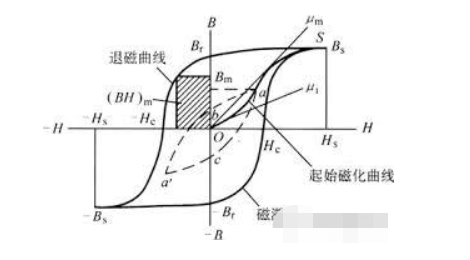
Die histerese -lyn beskryf die toenemende magnetiese induksie van 'n magnetiese materiaal namate die veldsterkte toeneem onder die werking van 'n toegepaste magnetiese sterkte van sterkte H.
Hierdie magnetiese induksie volg nie die veldsterkte na die bereiking van magnetiese versadiging nie.
After the magnetic saturation is reached, it is difficult to follow the increase in field strength. When the external magnetic field strength slowly decreases to zero, it can be seen that the demagnetization curve still retains the remanent magnetization B when it passes the zero point.
This remanent magnetization shows the general principle of manufacturing permanent magnets, i.e., directional magnetization followed by gradual demagnetization. When the inverse magnetic field is applied, the magnetic induction strength goes to zero or even increases in the opposite direction, and this excess is called the coercivity H.
1.3 Electromagnetic force and mechanical energy
The greatest value of the motor is to realize the conversion of electrical energy to mechanical energy, to do work externally and to execute the target motion.
The motion of a charged particle in a magnetic field is subject to the Lorentz force perpendicular to the direction of motion, whose macroscopic expression is the Ampere force Hm = Il * B , which can be judged by using the left-hand rule to determine the direction,
I is the effective length of the conductor in the magnetic field in the direction of the current.

There is also a corresponding electric field force in the electrostatic field Fe=qE .
And both magnetic and electric fields are themselves fields, and the force applied to the charge or current element in them depends on the volume and field density, and thus the corresponding field force can be examined in terms of the field.
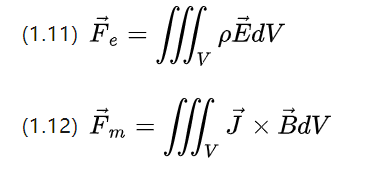
The above two equations still maintain the symmetry, the charge density P in a certain volume due to the electric field field field strength produces the electric force density fe = pE,
The current density J in a certain volume due to the magnetic field field strength produces the magnetic force density Fm = J * B (the above equation (1.12) must be used in the case of isotropic materials and constant current) .
Hierdie uitdrukking inspireer ons om die energie- en energiedigtheid van die elektromagnetiese veld direk te ondersoek.
Op hierdie manier kan die elektromagnetiese potensiële energie op 'n sekere punt bepaal word deur die gradiënt te vind om die ooreenstemmende elektromagnetiese kragdigtheid te verkry en sodoende die totale elektromagnetiese krag op die voorwerp wat ondersoek word, te vind.
1.4 spoelmodel
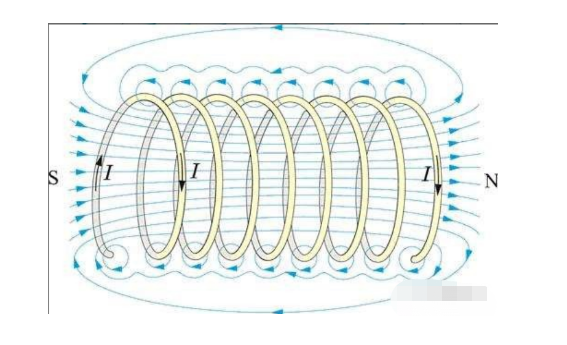
'N Spoel is 'n fundamentele element wat 'n model van induksiemotors vorm, wat die stroombaanmodel van die AC -motor en die fisiese model van die voorwerp oorbrug.
'N Reguit gedeelte van die energieke geleier genereer 'n toroidale magnetiese veld daar rondom (volgens vergelyking 1.4).
When the conductor is closed at the beginning and end, the toroidal field forms magnetic lines of force in the center of the conductor ring that pass vertically through the conductor ring, such as a solenoid.
Considering only the current on the energized conductor, (1.4) simplifies to:

The magnetomotive force (magnetische Durchfluchtung), which is the source of the strength of the excitation field, is essentially the strength of the total current passing through a section of closed conductor in [A].
Since in practice the energized wire will be wound into a coil, the wire current is discretized and (1.13) is rewritten as

N is the total number of windings in the coil, i.e., the number of turns.
Daar kan gesien word dat as die aantal draaie hoër is, die totale stroom hoër is, die magnetiese potensiaal hoër is, en hoe sterker kan die magneetveld opgewonde wees.
'N Enkele draai-spoel in 'n tydsveranderende magnetiese veld sal 'n spanning aan beide ente van die draad veroorsaak, 'n verskynsel wat deur (1.3) beskryf word.

Dit kan verstaan word dat die magnetiese induksie ook geïnterpreteer kan word as die magnetiese vloeddigtheid, wat verkry kan word deur te vervang (1.3)

UI is die geïnduseerde elektriese potensiaal, oorweeg twee vorme van vloedverandering, een is om die spoelarea te verander, maar die vloeddigtheid te verander, dan is daar soos volg;
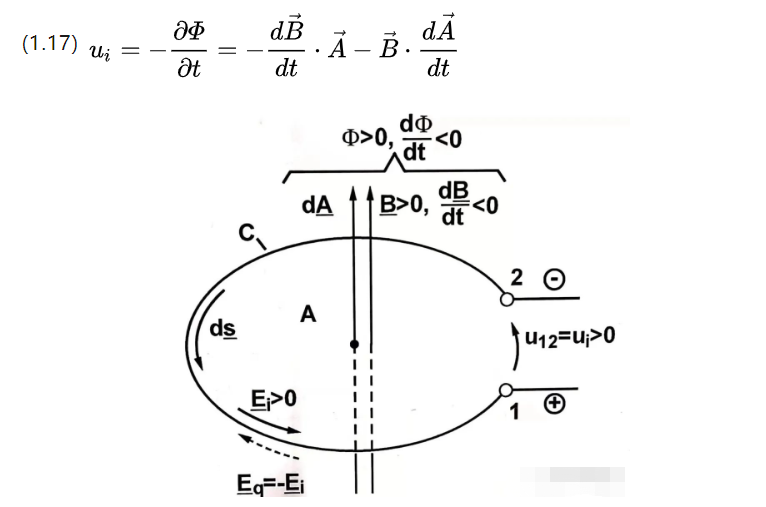
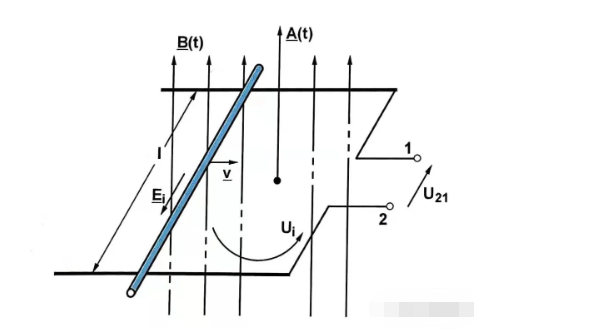
The former part is the formally transformed induction potential (transformatisch induzierte Spannung) and the latter part is the translationally transformed induction potential (translatorisch induzierte Spannung).
The former has a time-varying magnetic flux density, while the latter has a time-varying effective coil area.
This induction principle is mentioned in high school physics and is also known as the flute theorem.
When a coil has many turns, the total effective flux is exactly an integer multiple of the expanded coil turns, thus introducing the concept of a magnetic chain.
The chain is defined in the figure below.
Note that the magnetic chain is a scalar quantity, just like the magnetic flux. Since a change in current itself can also cause a change in flux, the tendency is to impede the flux change, which can be defined as:
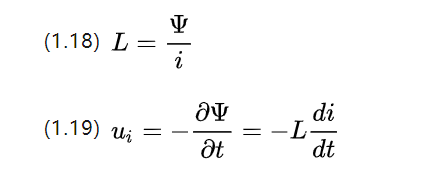
i is the varying current intensity, L is the self-inductance coefficient in Henry [H], and its size is related to the coil volume shape, number of turns, and magnetic permeability.
Coils in induction motors are made to have ferromagnetic material in the middle of the coil, such as an iron core, in order to increase the magnetic permeability, so that the coil is wound on the iron core, hence the name winding.
Vir 'n gedeelte van lineêr homogene materiaal kan die selfinduktansiekoëffisiënt deur die volgende vergelyking benader word

Selfinduktansie is 'n spoel van sy eie stroomveranderings om die verskynsel van onderdrukkingspanning te veroorsaak, die neiging om stroomveranderings oor DC-elektriese motor te belemmer.
Wanneer twee spoele naby mekaar is, benewens hul eie self-induktansie, maar ook as gevolg van die naburige spoele op die huidige veranderinge en onderlinge induktansie

Die koëffisiënt van wedersydse induktansie van materiale met lineêre identiteite word benader deur bogenoemde vergelyking, wat toon dat die onderlinge induktansie beïnvloed word deur die aantal draaie van die twee spoele tegelyk.
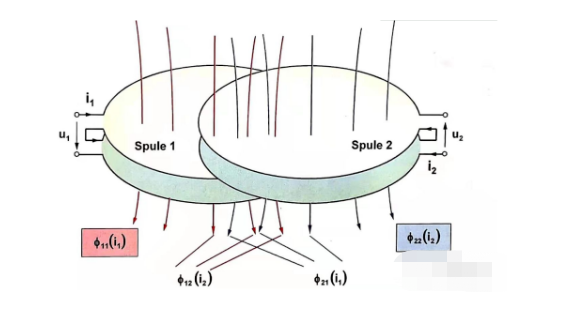
Die spanningsvergelyking kan die weerstand ignoreer en die self- en onderlinge induktansie van die twee aangrensende spoele ondersoek, en dit kan gelys word uit Figuur 1.5 oor DC -motors

Aangesien die koppelingsonderdele dieselfde materiële parameters en vorm het, is die resulterende onderlinge induktansie -koëffisiënte gelyk M12 = M21.
Die grootte van die koppelingskettings op elke spoel is dus eweredig aan die huidige sterkte op die ooreenstemmende rotorwindings vir GS -motor.

1.5 Ohm se stelling vir elektriese energie en magnetiese stroombane
In die sekondêre skool het ons die stelling van Ohm bestudeer, wat sê dat die weerstand van 'n geleier die verhouding van die spanning en stroom aan beide ente is, en dat daar 'n formule is om die weerstandige materiaal self te beskryf.
Q, which is the conductivity, which is exactly the reciprocal of the resistivity P and describes the ability to conduct current.
In addition to applying resistance, the relationship between voltage and current can also be described using the conductivity picture when the electric motor work.
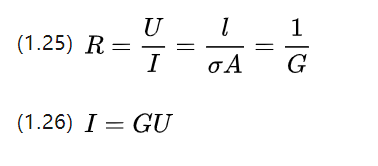
Now examine the current intensity per unit area, i.e., current density J = I/A e (e is the unit vector), with current density as a vector pointing in the direction of the current for ac motors.
This can be combined with the voltage equation U=E.l and (1.25) rewritten (1.26) as

The above equation describes the Ohm's theorem at the microscopic level, i.e., the variation of the current density corresponding to a constant field strength applied to the conductor.
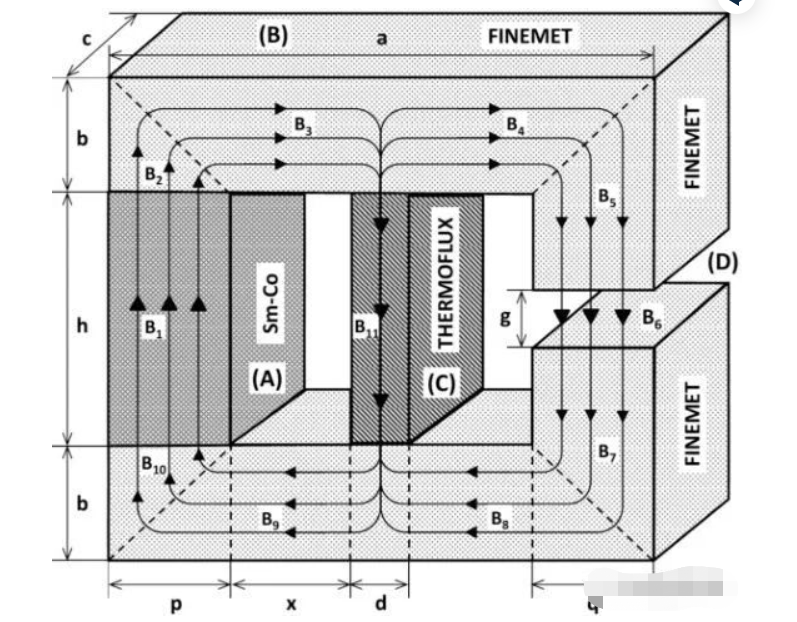
Lm is the effective length of the magnetic flux through a section of the magnetic circuit, and A is the corresponding flux area.
The above equation is very similar to the resistance formula.
Let us deform the magnetoresistance formula again and we can continue to obtain

It can be seen that in units the magnetoresistance is actually the inverse of the inductance coefficient.
Continuing the analogy with the concept of conductance, we obtain the magnetic conductance A (magnetische Leitwert, in [H] or [Ωs])
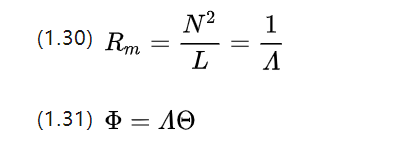
In the circuit we find the differential elements for (1.26) and get the microscopic Ohm's theorem, so what is the microscopic Ohm's theorem corresponding to the magnetic circuit?
We can go on to rewrite equation (1.31), noting that the magnetic flux itself has a flux density B ,which then yields

So the microscopic magnetic circuit Ohm's theorem is equation (1.10), and the magnetic field strength under is the flux density obtained from the magnetization of a constant magnetic field.
The computational analysis of the reluctance can be used to realize a micro-element analysis of the flux in the entire motor winding pole, core part and intermediate air gap part, which can realize a discrete finite element analysis FEM (Finite-Elemente-Methode) of the entire magnetic circuit.
It is also possible to apply Kirchhoff's theorem for the circuit in the magnetic circuit, which is very intuitive and convenient.
Welkom om meer inligting oor elektriese motors in die kommentaararea met ons te deel!
Kontak die professionele elektriese motor enige ondersoek na elektriese motor vervaardiger in Sjina soos volg:

Dongchun Motor het 'n wye verskeidenheid elektriese motors wat in verskillende industrieë gebruik word, soos vervoer, infrastruktuur en konstruksie.
Kry 'n vinnige antwoord.








